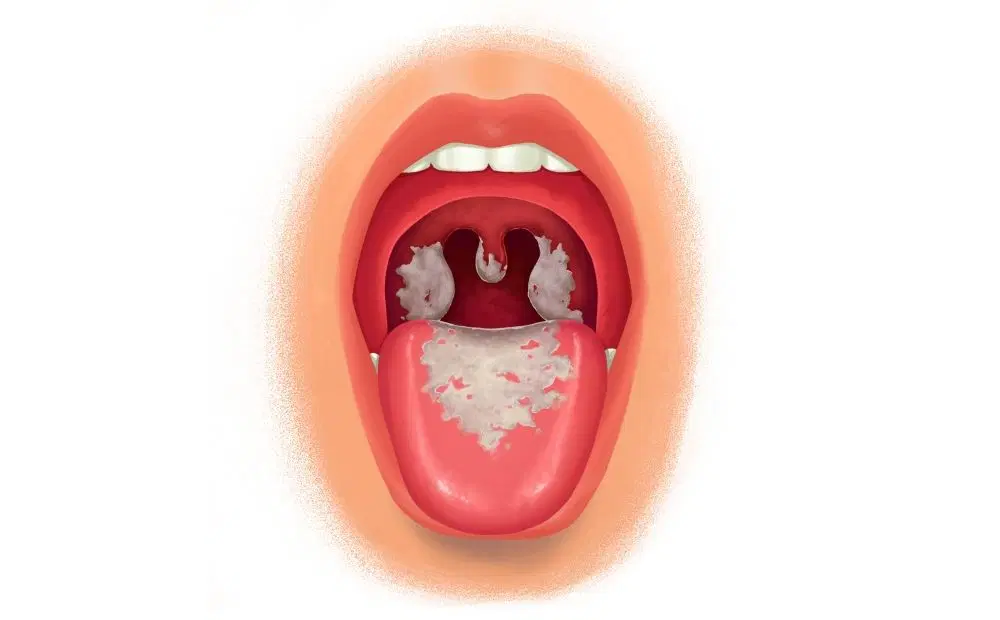What Is Diphtheria?
Diphtheria is a life-threatening bacterial infection caused by Corynebacterium diphtheriae. The disease primarily affects the respiratory system, producing a toxin that damages tissues, leading to severe complications if untreated. While once a major cause of death in children, diphtheria has become rare in countries with widespread vaccination. However, outbreaks still occur in regions with low immunization coverage.

Causes and Pathophysiology
Diphtheria is caused by Corynebacterium diphtheriae, a Gram-positive, non-motile, rod-shaped bacterium. The primary virulence factor is the diphtheria toxin, which:
- Inhibits protein synthesis in host cells.
- Causes tissue necrosis and inflammation.
- Leads to pseudomembrane formation in the throat, obstructing airways.
There are four major strains of C. diphtheriae: gravis, mitis, intermedius, and belfanti, each varying in toxin production and severity of disease.
Symptoms and Clinical Presentation
The incubation period for diphtheria ranges from 2 to 5 days, after which symptoms develop. The severity depends on toxin production and host immunity.
Respiratory Diphtheria Symptoms
- Sore throat and difficulty swallowing.
- Pseudomembrane formation, a thick grayish-white layer covering the throat and tonsils.
- Bull neck, caused by swollen lymph nodes.
- Hoarseness and barking cough, due to laryngeal involvement.
- Breathing difficulty, possibly leading to respiratory failure.
Systemic Complications
If untreated, the toxin spreads through the bloodstream, affecting various organs:
- Myocarditis: Inflammation of the heart muscle, leading to arrhythmias and heart failure.
- Neuropathy: Peripheral nerve damage, causing paralysis.
- Renal failure: Due to toxin-mediated kidney damage.
Transmission and Risk Factors
Diphtheria spreads primarily through:
- Respiratory droplets: When an infected person coughs or sneezes.
- Direct contact: Touching open sores or contaminated surfaces.
- Asymptomatic carriers: Some people harbor the bacteria without showing symptoms but can still spread it.
High-risk groups include:
- Unvaccinated individuals.
- People living in crowded or unsanitary conditions.
- Individuals with weakened immune systems.
Diagnosis of Diphtheria
Accurate and early diagnosis is crucial to prevent complications. Key diagnostic methods include:
- Clinical Examination: Identifying the characteristic pseudomembrane in the throat.
- Throat Culture: Confirming the presence of C. diphtheriae in laboratory tests.
- Toxin Assay: Detecting diphtheria toxin production using the Elek test or PCR.
- Blood Tests: Assessing complications such as myocarditis.
Treatment and Management
Diphtheria is a medical emergency that requires immediate intervention. Treatment includes:
- Diphtheria Antitoxin (DAT): Neutralizes circulating toxin but does not reverse existing damage.
- Antibiotics: Penicillin or erythromycin eliminate bacterial infection.
- Airway Management: Tracheostomy or mechanical ventilation may be necessary in severe cases.
- Supportive Care: Includes hydration, monitoring for cardiac complications, and intensive care if needed.
Patients are isolated until cultures confirm bacterial clearance to prevent further spread.
Prevention: The Role of Vaccination
The diphtheria vaccine is the most effective prevention strategy. It is part of the combined DTaP (diphtheria, tetanus, pertussis) vaccine for children and Tdap or Td boosters for adults.
Recommended Vaccination Schedule
- Infants & Children: Five doses of DTaP at 2, 4, 6, 15-18 months, and 4-6 years.
- Adolescents & Adults: Tdap booster at 11-12 years, followed by Td boosters every 10 years.
- Pregnant Women: One Tdap dose during each pregnancy.
Herd immunity is essential in preventing outbreaks, especially in areas with declining vaccination rates.
Historical Significance and Global Impact
Once a leading cause of childhood mortality, with major outbreaks occurring before vaccination became widespread. The 1925 serum run to Nome, Alaska, where sled dogs transported diphtheria antitoxin to save an isolated community, remains one of the most famous historical events related to the disease.
Despite successful vaccination programs, diphtheria resurges in countries with declining immunization rates. Continued surveillance and vaccination efforts are necessary to prevent future outbreaks.